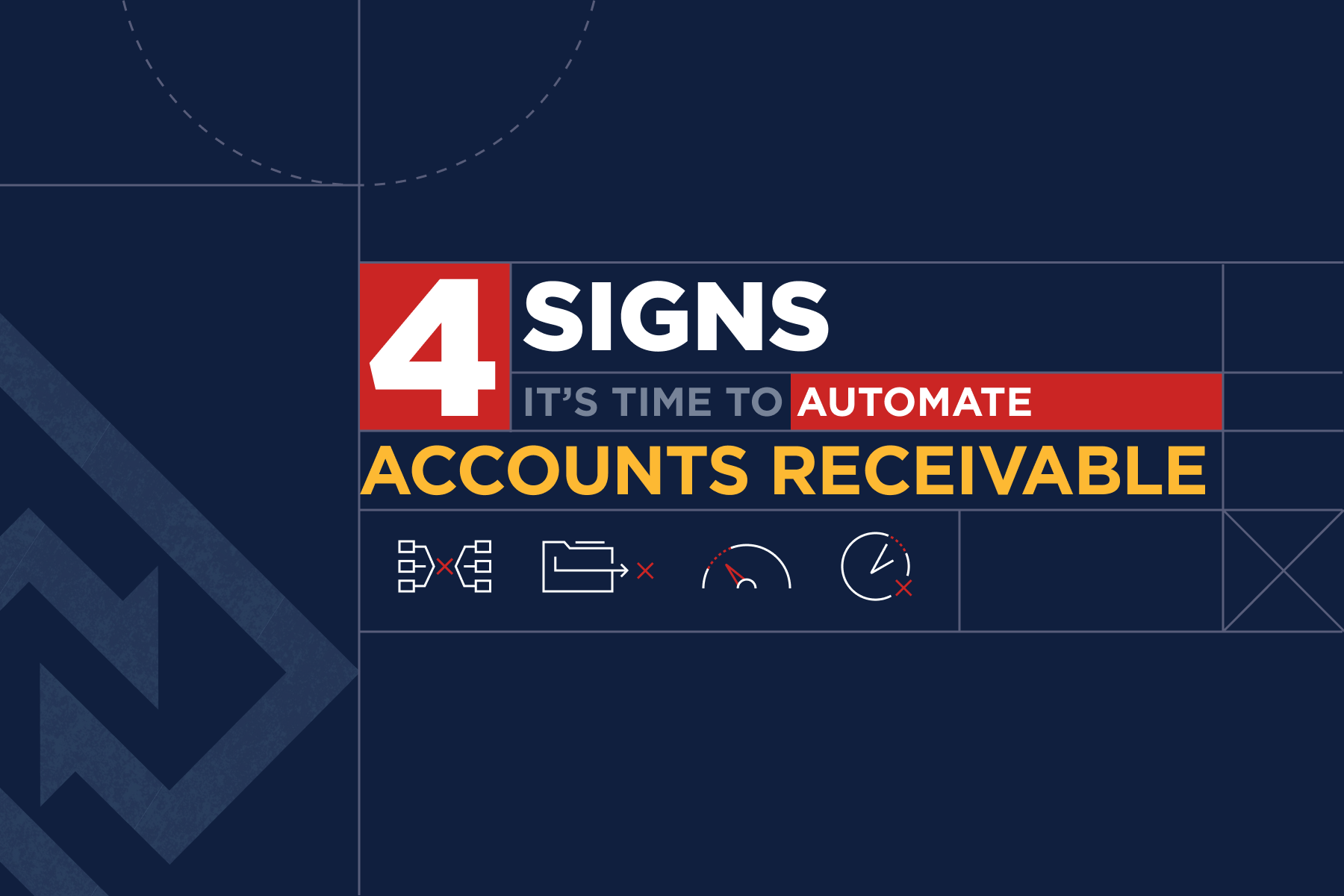Accounts receivable automation is on the minds of more and more businesses these days.
For many businesses, the economic fallout of the pandemic has resulted in increased Days Sales Outstanding (DSO), higher aging balances, a spike in customer disputes, and more write-offs and bad debit.
Businesses know that they need to find ways to collect more of their receivables, faster.
Wondering if your Accounts Receivable Department Could Benefit from Automation?
Here are four signs that it’s time to automate accounts receivable with an A2A solution:
 1. You Use Standalone Payment Processing Systems
1. You Use Standalone Payment Processing Systems
Accounts receivable leaders have pined for the day when most of their payments from customers arrive electronically. With that being said, proliferating payment channels and new payment types have complicated things for accounts receivable departments.
Many accounts receivables departments rely on standalone systems for each payment channel or payment type that they accept.
Maintaining multiple payment processing systems creates various obstacles within accounts receivable department’s including:
- increased operational overhead
- heavier IT burden
- silos are created that contribute to information latency & fraud risks
- increased difficulty for the business to support new payment channels and payment types preferred by customers
With more businesses planning to make more of their payments to suppliers electronically because of the shift to remote working, the inefficiencies caused by standalone payment processing systems will become greater, especially for fast-growing businesses.
A2A payment solutions provide a single platform for automating accounts receivable business process flows for any payment type, from any payment channel.
A2A payment solutions also include a centralized business directory that makes it easier for buyers to onboard your business and begin paying you electronically, instead of using paper checks.
 2. You Key A Lot of Remittance Data
2. You Key A Lot of Remittance Data
Applying payments to open invoices requires complete and accurate remittance information. That is easier said than done for many accounts receivable departments.
Most accounts receivable departments key most of the remittance details that they receive because of the complexity involved in automatically capturing data from the endless array of formats that customers use for their remittance documents. Even remittance documents sent via e-mail and online customer portals require keying.
Keying results in:
- higher operational costs
- more opportunities for errors
- slower cycles
Some accounts receivable departments pay big bucks to a lockbox provider to key remittance data on their behalf, only to end up with a sizeable percentage of exceptions.
A2A solutions reduce an organization’s unapplied cash by electronically connecting the ERP platforms used by buyers and suppliers, allowing for the touch-free exchange of rich remittance details with payments.
The remittance details provided by an A2A solution enables accounts receivable departments to post more of the payments they receive directly to their ERP, without human intervention. This means a department can process more volume without the need for additional staff.
 3. You Waste Time Manually Matching Remittances to Payments
3. You Waste Time Manually Matching Remittances to Payments
It is not uncommon for remittances to arrive separately from payments.
Remittance details may arrive on different days, via a different channel and in a different format. What’s more, remittance data may be incomplete or inaccurate.
As a result, staff waste a lot of time manually matching remittances to payments for cash application.
Things become more complicated when customers:
- take an unauthorized discount
- make one payment for multiple invoices
- pre-pay for purchases
- pay an amount that is not reflected in the supplier’s ERP
- potential credits or refunds are pending on an account from previous transactions
In these cases, it may not be clear which payment goes with which remittance document.
A2A solutions eliminate the guesswork in matching payments and remittances by digitally transmitting remittance details with payments, eliminating the possibility of confusion or dis-jointed transactions.
 4. You Receive Too Many Late Payments
4. You Receive Too Many Late Payments
Late payments from customers can make it hard for businesses to buy raw materials, manufacture, market and sell their products and services, make payroll, or cover their administrative expenses.
The impact of late payments can be especially big on small and mid-sized businesses that don’t have large lines of credit that they can draw down. Late payments can even contribute to business failure.
A2A solutions accelerate cash flow. Unlike paper checks, electronic payments can be initiated with a few clicks of the mouse.
Electronic payments are beneficial in that they:
- cannot be delayed or lost in the mail
- always arrive as scheduled
- can arrive within seconds of being executed depending on which payment method is being utilized
- always allow suppliers to know where a payment stands, resulting in accurate cash forecasting
What’s more, some electronic payment options are irrevocable, providing the supplier with peace of mind that they will receive their funds.
Leverage Account-to-Account Solutions to Automate your AR Payments
If your accounts receivable department is experiencing any of these issues, it might be time to automate.
Transcard's A2A solution will enable your accounts receivable department to process all customer payments:
- on a single platform
- post rich remittance data directly to your ERP without human operator intervention
- eliminate the need to manually match remittances with payments
- greatly accelerate your cash flow
- improve your cash forecasting through electronic payments.
Automation such as account-to-account (A2A) payment solutions can’t prevent the challenges caused by the recession, but A2A solutions and other accounts receivable technologies can eliminate the friction in the accounts receivable lifecycle that worsens the impact of slow customer payments.
Want to learn more about automating accounts receivable?
Let’s arrange a time to chat about our A2A solution.




